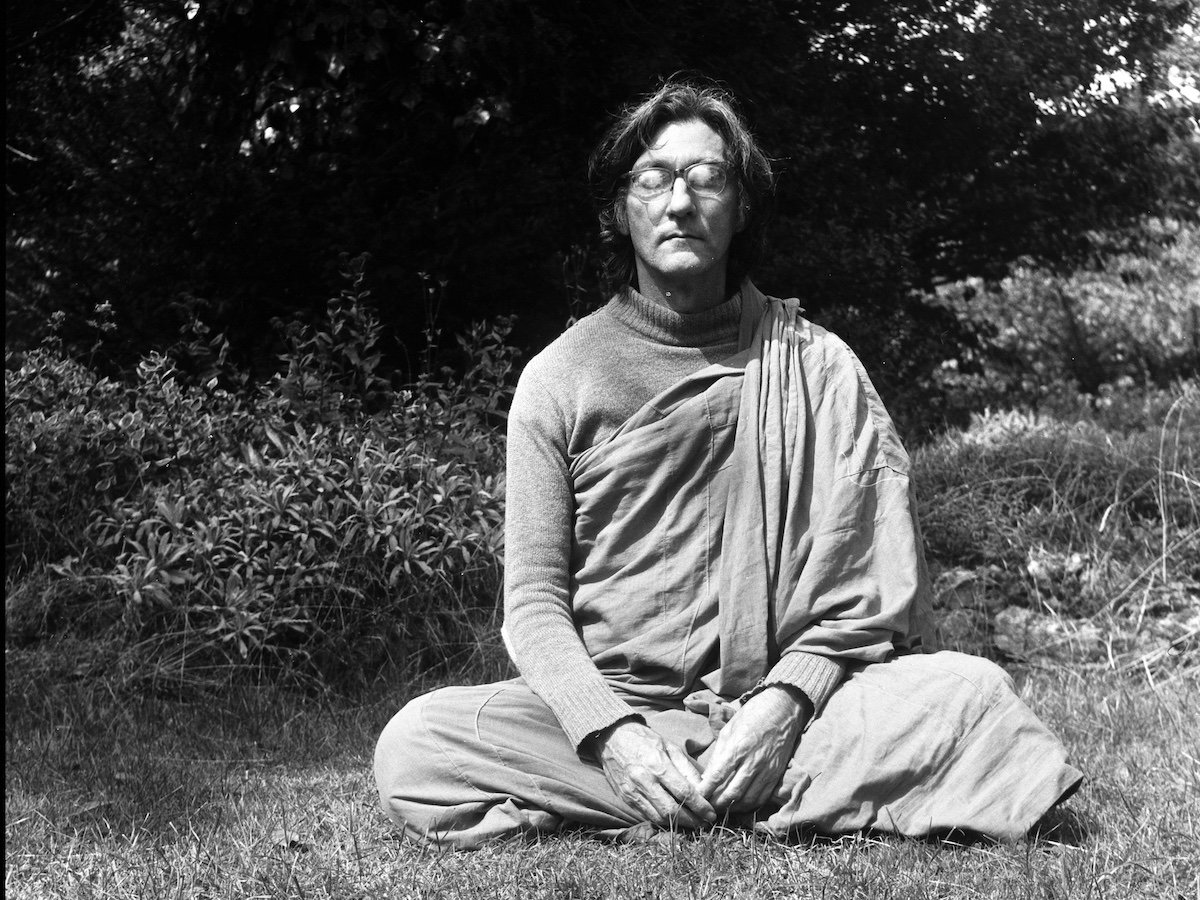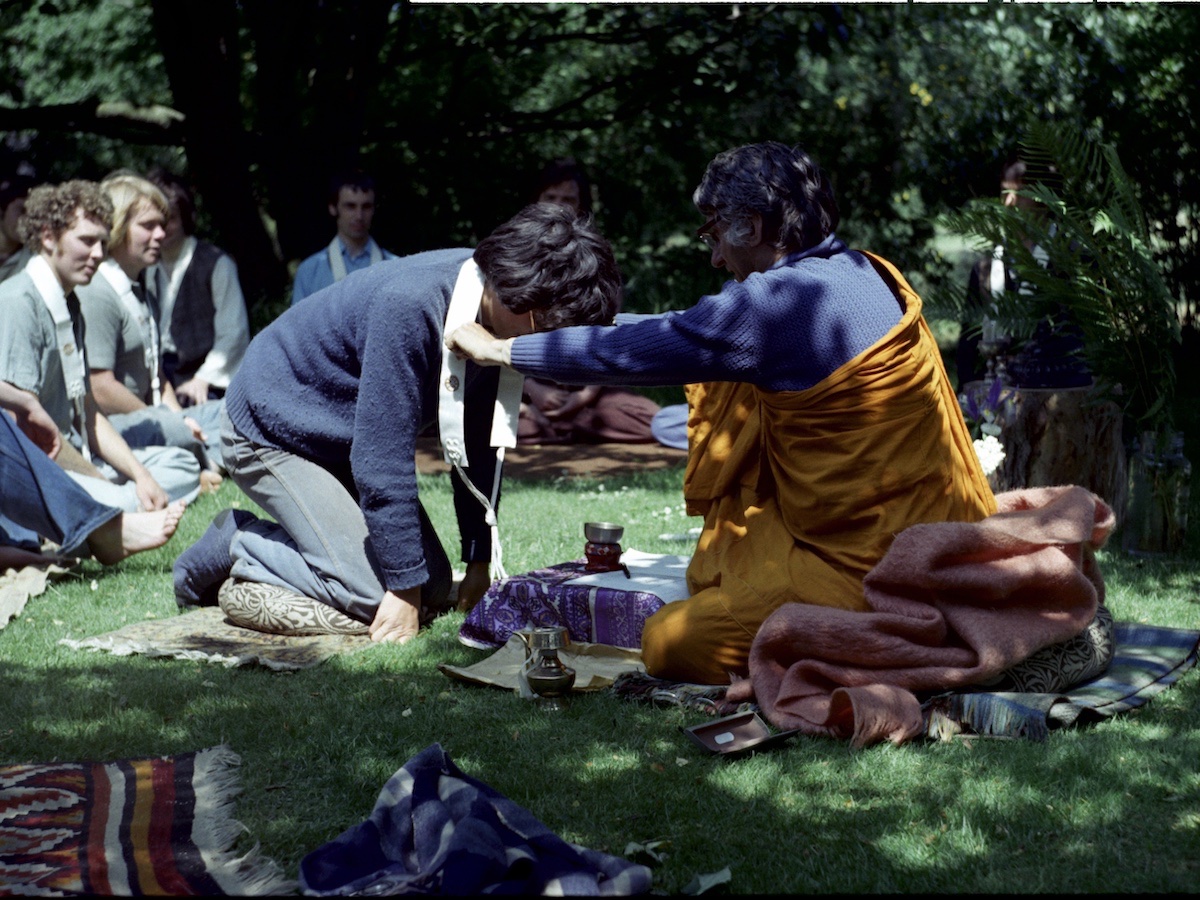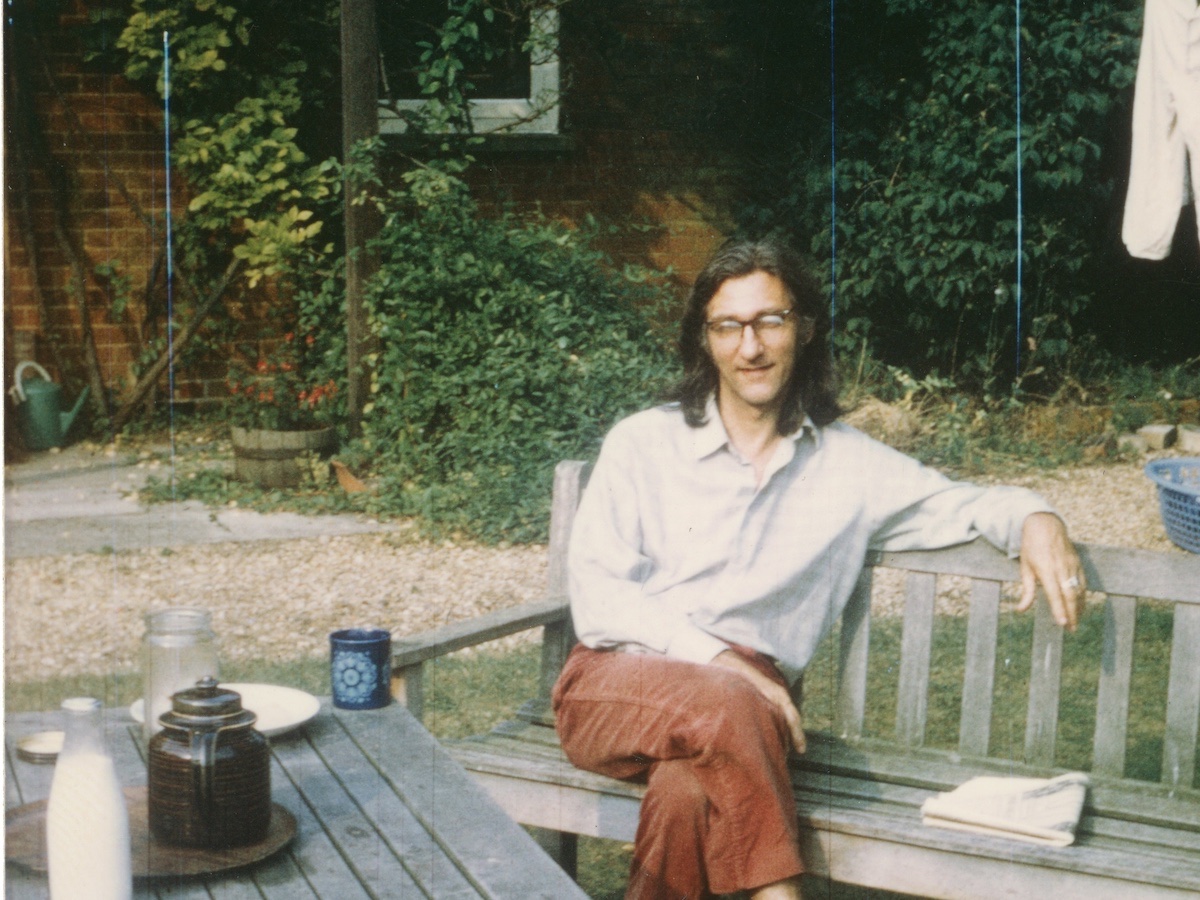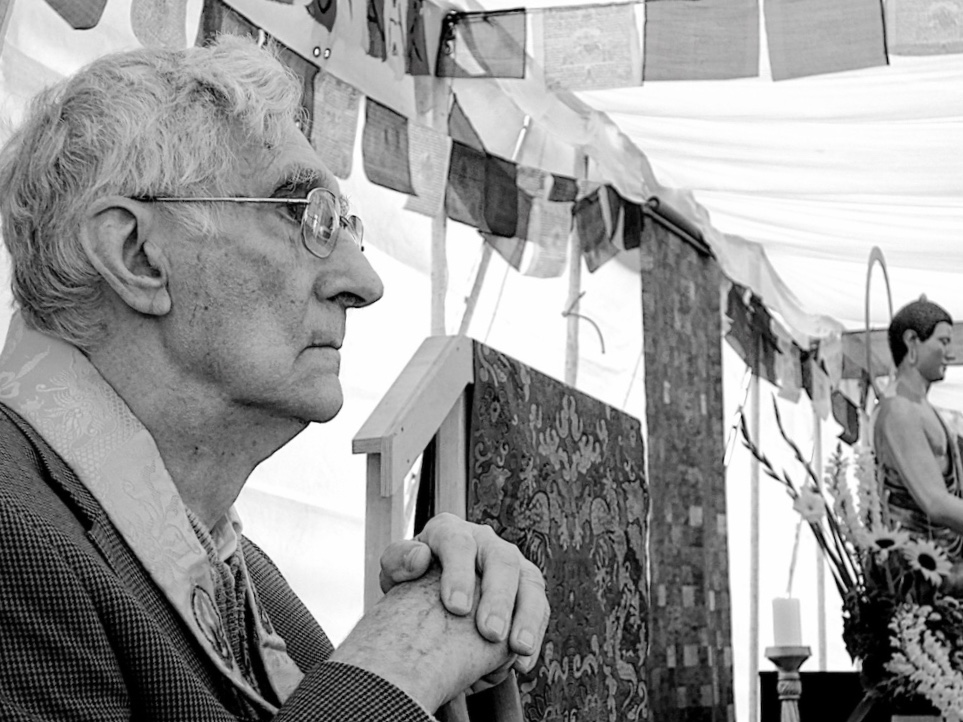About the College
In 1995 Urgyen Sangharakshita, the founder and first Head of the Triratna Buddhist Order, handed on responsibility for conducting public ordinations to a group of five Order members – Sanghadevi, Sona, Srimala, Subhuti and Suvajra – with whom he had worked closely over many years and who shared very deeply his understanding of Going for Refuge, the essential Buddhist act. With this handing on, the College of Public Preceptors was established. The College has grown and developed considerably since then: there are currently 44 members: 24 men and 20 women.
In this section, we introduce Urgyen Sangharakshita and explain the responsibilities of the College, as well as its relationship with the wider Triratna community.
CENTRALITY OF ORDINATION
The primary responsibility of the College of Public Preceptors is overseeing the ordination of new members and welcoming them into the Triratna Buddhist Order.
When Urgyen Sangharakshita founded the Western Buddhist Order in 1968 he was very clear that he was establishing a community of men and women wholeheartedly committed to a life in the Dharma, employing teachings and practices coming from the Buddha.
The ordination ceremony is our central ritual. It follows a traditional pattern, and is simple and profound. At its heart is the act of Going For Refuge, the formal recitation of the Three Refuges, commitment to The Buddha, the ideal of human enlightenment, to the Dharma, the path and the teaching, and to the Sangha, the community of Enlightened individuals who have trodden the path. The recitation of the Ten Precepts which then follows reflects an aspiration to give expression to Going for Refuge in a very immediate and practical way.
The ceremony has two parts: a private ordination that is witnessed solely by a Private Preceptor and indicates a personal commitment to live out one’s Going for Refuge to the Three Jewels, even if one has to do it completely alone; and a public ordination that is conducted by a Public Preceptor and witnessed by other members of the community, family and other friends. It culminates with the bestowal of a ceremonial kesa and announcement of a new Buddhist name. One is not alone but engaging in one’s Dharma life in the whole context of a sangha or spiritual community.
The meaning and spirit of the ritual is summed up in the acceptance verses, recited as part of the public ceremony.
- With loyalty to my teachers I accept this ordination
- In harmony with friends and companions I accept this ordination
- For the attainment of Enlightenment I accept this ordination
- For the benefit of all beings I accept this ordination.




URGYEN SANGHARAKSHITA
Founder of Triratna
The Triratna community was founded as the Friends of the Western Buddhist Order in 1967 by Sangharakshita, an Englishman, who was ordained as a Buddhist monk in India in 1950, at the age of 25. He lived for many years in Kalimpong, north-eastern India, where he studied with teachers from several of the major Buddhist traditions, including leading Tibetan lamas. During this period, Sangharakshita became well known for a non-sectarian approach that drew on the whole Buddhist tradition, especially through his book A Survey of Buddhism, and as editor of the Maha Bodhi Journal.
Invited by members of Britain’s small Buddhist community, Sangharakshita returned to the UK in the mid-1960s. Now that he was addressing Westerners, he saw the need for forms of the teaching and practice that would most effectively communicate the teaching of the Buddha to the people he was meeting. That also meant he needed to go back to basics — to look at the principles underlying all forms of Buddhism and work out how best to apply them in this new context. So, the Triratna community is an ecumenical movement, aligned to no one traditional school, but drawing on the whole stream of Buddhist inspiration.
In 1968 Sangharakshita performed the first ordinations within the Western Buddhist Order (WBO) which was to be at the heart of his new Buddhist movement.
In 1995 Sangharakshita handed on responsibility for conducting ordinations to a group of five of his disciples – Sanghadevi, Sona, Srimala, Subhuti and Suvajra – with whom he had worked closely and whom he considered to share very deeply his understanding of Going for Refuge, the essential Buddhist act. This handing on established the College of Public Preceptors.
New Public Preceptors are drawn from Order members who have been effective Private Preceptors for some time. They are appointed with the agreement of the whole College on the recommendation of those of its members who personally recognise in the candidate a sufficiently deep level of understanding of Sangharakshita’s presentation of the Dharma. Before the College makes a final appointment, we carry out a consultation that enables us to hear advice from any Order member who wishes to comment, whether to express support or raise doubts. This enables us to make our decision after considering the best and broadest range of advice available.
RESPONSIBILITIES OF THE COLLEGE
“I established the Order by recognizing in the ordination ceremony that those I was ordaining were Going for Refuge in the sense that I understood it; and by encouraging them to continue Going for Refuge in the light of my understanding… All this is implied in the commitment that all Order members make in their ordinations, whether witnessed by me or by Preceptors whose understanding of what Going for Refuge means derives from my own, either directly or via their own Preceptors. The Triratna Buddhist Order is therefore a Sangha of those who share my understanding of the Dharma and follow practices that flow from that understanding.” Urgyen Sangharakshita, April 2017
The defining responsibility of a Public Preceptor is witnessing a Mitra’s effective Going for Refuge to the Three Jewels in the Public Ordination ceremony, through which he or she enters the Order. This witnessing is personal, and depends on the Preceptor recognizing in the one they are ordaining the same spiritual commitment they find in themselves. The personal character of this relationship between the Preceptor and the one they ordain is the basis of the Order. All the responsibilities of a Public Preceptor flow from this.
Aside from conducting ordinations, other responsibilities of the College include:
- Appointing and Training Public Preceptors
- Overseeing Training for Ordination
- Appointing and Training Private Preceptors
- Reviewing Public and Private Preceptors
- Deciding on Suspensions and Expulsions from the Order
COLLEGE-ORDER-COMMUNITY
What is the College’s relationship to the Order and wider community?
First and foremost, a Public Preceptor witnesses a Mitra’s effective Going for Refuge to the Three Jewels in the Public Ordination ceremony, through which he or she enters the Order.
College members are appointed because they have broad experience of the life of the Order and a deep resonance with its founding vision, which they share with other Public Preceptors. Through this they provide the Order with cohesion around ideas, teachings, practices, and institutions, and maintain unity across generations and cultures, as well as groupings of Order members within the community with different approaches and enthusiasms.
How do they provide this cohesion practically?
The Public Preceptors’ chief responsibility is for ordaining men and women when they consider them to be Going for Refuge effectively to the Three Jewels in the sense that they themselves understand it, which is the understanding they shared with their own Preceptors, back to Urgyen Sangharakshita himself, who founded the Order.
They conduct those ordinations in the larger context of the Order and movement. Those preparing for ordination and those who have been newly ordained are very much influenced by those around them. The College must be confident, therefore, that those who most strongly influence the understanding and experience of those preparing for ordination really share College members’ understanding of what the Order is and what Going for Refuge means within it. So they need to have real confidence in Private Preceptors and Ordination Teams in this respect. The broader context of Centre and local Order and so on will also be taken very fully into account. And this confidence is gathered through the network of kalyana mitrata, or spiritual friendship, that runs throughout the Order and Triratna community.
This lies at the basis of the Order and means that the College of Public Preceptors exerts influence and provides cohesion primarily through kalyana mitrata – the spiritual friendships individual Public Preceptors have with other Order members and with those within the wider community. Someone ordained within Triratna anywhere in the world is immediately accepted by the whole Order. The responsibility for maintaining this network of trust and kalyana mitrata lies not just with the College but with every Order member.
Where can I find out more information about all this?
Here, by clicking the following link.
